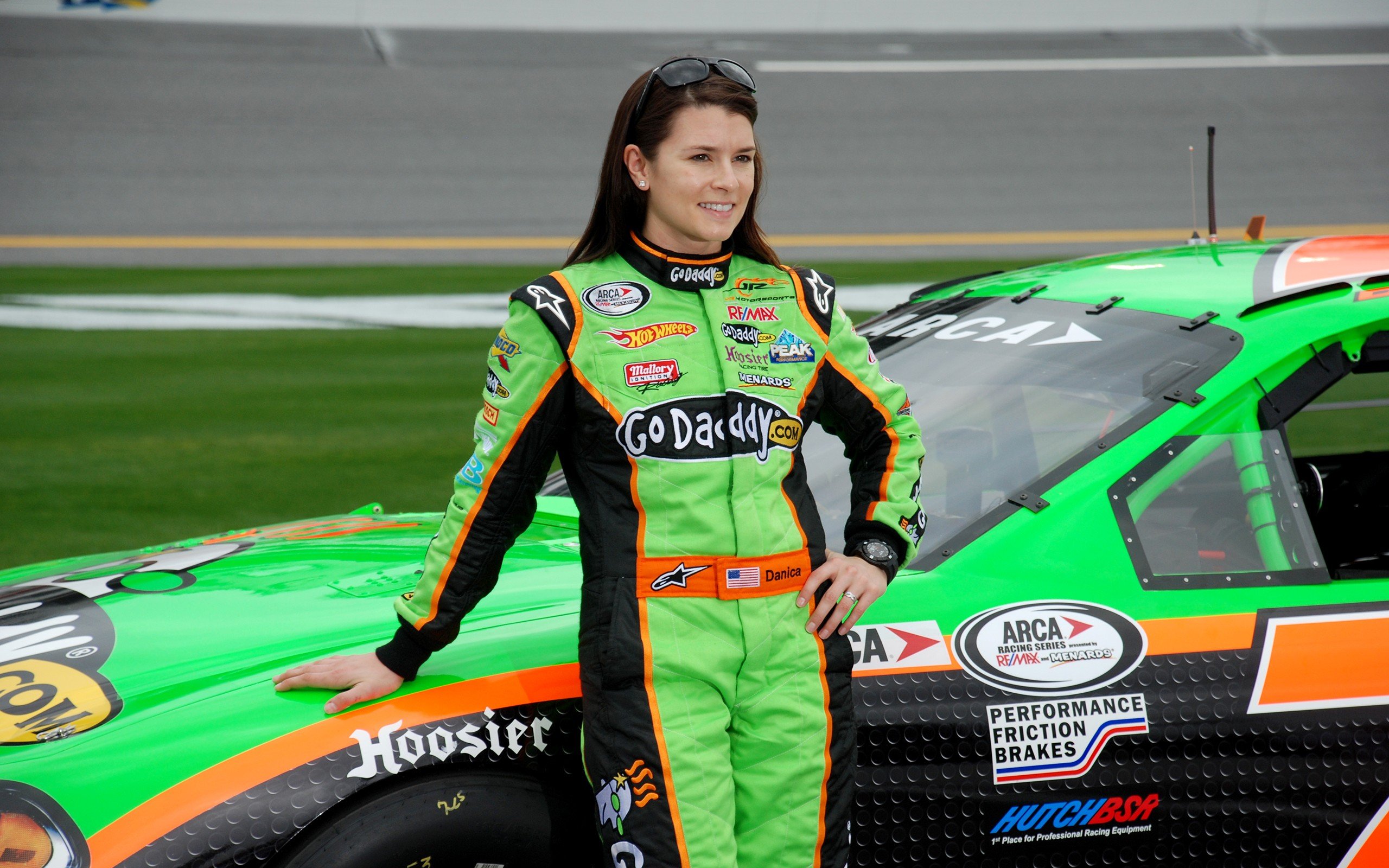The roar of an engine, the swift passing of a vehicle, the sheer excitement of competition on a track, it is a feeling many of us know, or perhaps, have only dreamed about. This world, where speed meets absolute accuracy, has captivated hearts for a very long time. It is a place where machines are pushed to their very limits, and those who guide them show immense skill. We are talking about the kind of high-speed contests that grab your attention and simply do not let go, where every turn, every quick move, counts for so much.
It is in this thrilling setting that figures like Danica Patrick have made their mark, showing what it means to truly push the boundaries of what is thought possible in racing. Her presence on the circuit has, in a way, helped reshape how many people see the sport, adding a different kind of energy to the contests. She represents a spirit of determination and a drive to compete at the very top, something that resonates with fans of the sport around the globe. Her journey through different racing types, too, showcases a true passion for the high-speed challenges that come with this kind of athletic pursuit.
When we think about what goes into these speedy events, it is not just the drivers, but the incredibly specialized vehicles they command. From simulators that replicate the feeling of a real race car with great exactness, to the classic machines that have seen many contests, each piece of equipment plays a big part. These vehicles are put together with such care, using information that comes directly from actual race cars, which really shows how serious the effort is. It is this combination of human talent and mechanical brilliance that makes racing, and the story of someone like Danica Patrick, so very interesting, you know.
Table of Contents
- Danica Patrick's Early Years in Racing
- What makes a race car truly ready for the track with Danica Patrick?
- How do racing machines like those Danica Patrick might pilot come to life?
- The Thrill of Racing Danica Patrick's World
- Is there a connection between virtual and actual racing for Danica Patrick?
- What kind of equipment supports a racing Danica Patrick effort?
- The Legacy of Speed and Danica Patrick
Danica Patrick's Early Years in Racing
Thinking about a person who has made a significant mark in the fast-paced world of motor sports, Danica Patrick often comes to mind. Her path into racing started at a fairly young age, much like many who find their calling behind the wheel. She began her competitive driving in go-karts, a common starting point for many professional racers. This early experience helped her develop the reflexes and the keen sense of competition needed for higher levels of the sport. It's almost as if her early experiences set the stage for a career that would challenge traditional ideas about who could succeed in racing, you know.
As she grew, her ambition to race only became stronger. She moved through various open-wheel categories, learning the specific demands of different types of racing cars and tracks. This progression was, in a way, a steady climb, each step building on the one before it. The skills she picked up during these formative years would prove to be quite valuable as she moved into more visible and demanding series. It really shows how dedication from a young age can shape a person's entire professional life, especially in a field that requires such a particular set of talents.
Her journey eventually led her to the biggest stages in American motor sports, where she would go on to achieve some truly memorable results. This transition from junior categories to the highest ranks was a significant one, requiring not just driving talent, but also a strong mental approach. The story of her early years is, in some respects, a clear example of persistent effort and a natural gift for speed combining to create a notable career. It is pretty inspiring to see how someone can follow their passion from childhood right up to the top levels of their chosen field, you see.
- Love Letter To A Long Distance Boyfriend
- Roseanne The Tv Show Cast
- Neil Diamond Age Now
- Hard Core Pawn Owner
- Full Blood Is Thicker Than Water
| Detail | Information |
|---|---|
| Full Name | Danica Sue Patrick |
| Birth Date | March 25, 1982 |
| Birth Place | Beloit, Wisconsin, United States |
| Nationality | American |
| Primary Racing Series | IndyCar Series, NASCAR Cup Series |
| Notable Achievements | Only woman to win an IndyCar Series race (2008 Indy Japan 300) |
What makes a race car truly ready for the track with Danica Patrick?
When we talk about a race car being truly prepared for competition, it is about more than just having a powerful engine; it involves a deep level of precise engineering. Take, for instance, the 2022 Oracle Red Bull Racing RB18 show car simulator. This piece of equipment is quite special because it is the very first time a Formula 1 team has made available for purchase something that is based on the exact computer-aided design, or CAD, information from its actual F1 car. This means the simulator is a very close copy, giving a truly authentic feel of what it is like to be in the actual vehicle. It suggests a dedication to realism that is pretty impressive, you know.
This level of precision, you could say, is what sets top-tier racing apart. The fact that the simulator uses real car data means that every curve, every angle, every specific measurement is accounted for. It is not just a general idea of a race car; it is a direct copy. This commitment to exactness would, in a way, appeal to a driver like Danica Patrick, who relies on every detail of her vehicle to perform at her peak. The better the machine is put together, the more confidence a driver can have in its ability to respond exactly as needed on the circuit, which is really important.
Then, consider a vehicle like the 1991 Penske Racing, Rusty Wallace Pontiac. This car is described as being "ready to race in historic road race class," which implies a different kind of readiness, one that respects its past while still being able to perform today. It is not just about being fast; it is about being capable of competition after many years. This Pontiac, with its specific setup, shows that even older vehicles can be maintained to a very high standard, allowing them to return to the track for exciting contests. It is, in a way, a nod to the long history of the sport, still very much alive and capable of speed.
How do racing machines like those Danica Patrick might pilot come to life?
The creation of a serious race car, or even a very accurate simulator, starts with incredibly detailed plans and specific parts. For the 2022 Oracle Red Bull Racing RB18 show car simulator, the foundation is its use of "exact CAD data from its F1 car." This means that the digital blueprints, the precise measurements, and the design information used to build the actual Formula 1 vehicle are directly applied to the simulator's construction. This level of detail is, in some respects, what makes it so true to life. It ensures that the feel and response are as close as possible to the real thing, which is pretty amazing, really.
Moving from digital plans to physical components, we look at what makes a classic like the 1991 Penske Racing, Rusty Wallace Pontiac, so ready for a contest. It comes equipped with an "18 degree race engine," which refers to a specific design angle for the cylinder heads, often used to improve airflow and power output. This kind of engine is built for competition, not for everyday driving. Then there is the "road race transmission," a gearbox specifically designed to handle the demands of road course racing, allowing for quick and precise gear changes under pressure. These are very specialized pieces of equipment.
Furthermore, this vehicle features a "22 gallon fuel cell," which is a safety-enhanced fuel tank designed to hold a good amount of fuel for longer races while also protecting it in case of an incident. Safety, after all, is a big concern in racing. It also has "dual MSD ignition," a system that provides a very strong spark to the engine, helping it run smoothly and produce consistent power, which is very important for performance. And finally, "auto meter" refers to the specific brand of gauges and instruments inside the car, giving the driver clear information about the vehicle's performance. All these parts, put together, create a machine that is purpose-built for speed and control, you know.
The Thrill of Racing Danica Patrick's World
The excitement of racing is not limited to just the very top-tier series; it extends to many different types of vehicles and events. Think about the 1967.5 Datsun Roadster, described as a "race car since new" and "Affordable & ready to race!" This car speaks to a different side of the sport, one where passion meets accessibility. It shows that the thrill of competition can be found in a variety of settings, not just the most expensive ones. The idea that a car has been a race car from its very beginning, too, suggests a history of pure speed and excitement, which is kind of cool.
This Datsun, being "ready to race," means it has been prepared to meet the demands of competition, even if it is in a different class than a modern Formula 1 machine. It embodies the spirit of getting on the track and competing, which is a feeling that connects all racers, regardless of the vehicle they are driving. This readiness, you see, is a common thread that runs through all forms of motor sports, from the very quick open-wheel cars to the more traditional roadsters. It is about the preparation and the eagerness to face the challenges of the circuit, which is pretty much what racing is all about.
Similarly, the mention of "Categories race cars single seat / formula cars $ 16,000 van diemen rf88 ff2000 / fc description" points to another area of racing where aspiring drivers often start or continue their careers. These single-seat vehicles, like the Van Diemen RF88, are often used in feeder series, where drivers hone their skills before potentially moving to bigger stages. They are purpose-built for speed and precise handling, offering a pure driving experience. The fact that such a car is listed as ready for competition shows that the pathway into racing, or continuing in it, is open to many, which is a good thing for the sport, you know.
Is there a connection between virtual and actual racing for Danica Patrick?
It is a good question to consider whether the digital world of simulators truly connects with the physical reality of racing, especially for someone like Danica Patrick who has spent so much time on actual tracks. The 2022 Oracle Red Bull Racing RB18 show car simulator, built from "exact CAD data," offers a very strong link. This means the feel of the car, its responses, and the layout of its controls are designed to be as close as possible to the real thing. This kind of accuracy makes simulators a very useful tool, not just for entertainment, but for serious practice, too.
For professional racers, these highly detailed simulators can serve as a valuable place to refine skills without the risks or costs associated with real-world testing. A driver can practice specific turns, experiment with different racing lines, and even get a sense of how a particular vehicle might behave under various conditions. This kind of preparation, you could say, helps to sharpen a driver's instincts and decision-making abilities, which are very important on race day. It is, in a way, a safe space to push limits and learn, which can only help when it comes to the actual competition.
While a simulator cannot fully replicate the physical forces a driver experiences in a real race car, the visual and tactile feedback it provides is incredibly helpful. The precision of the data used to build the simulator means that the virtual experience is a very good stand-in for certain aspects of real driving. So, for someone like Danica Patrick, who has a deep understanding of what it takes to be quick on a track, a top-tier simulator could offer a way to stay sharp, to try new things, or simply to enjoy the feeling of speed in a controlled environment. It shows how technology and tradition can, in some respects, work together in the racing world.
What kind of equipment supports a racing Danica Patrick effort?
When you consider the specific pieces that make a race car perform at its best, it is a collection of highly specialized components, each playing a very important part. For example, the "18 degree race engine" is not just any engine; it is a power unit built with a specific design that aims to get the most output for racing conditions. This type of engine is tuned for high performance and durability under extreme stress, which is very different from what you would find in a typical street car. It is, in a way, the heart of the speed, you know.
Then there is the "road race transmission," which is a gear-shifting system engineered to handle the constant, rapid changes required on a winding road course. Unlike transmissions designed for drag racing or regular driving, a road race version allows for quick, smooth shifts that help a driver maintain momentum through corners and on straightaways. This kind of transmission is built to take a lot of punishment and still perform with great accuracy, which is pretty much what you need when you are going very fast.
The "22 gallon fuel cell" is another key piece of equipment. This is a special type of fuel tank, often made with internal foam baffles to prevent fuel slosh and designed to be much more resistant to punctures and leaks in the event of an impact. Its larger capacity means the car can run for longer periods without needing to refuel, a critical factor in endurance or longer sprint races. Safety and consistent fuel delivery are, in some respects, two of its most important functions.
And let's not forget the "dual MSD ignition" system. This provides a very strong and consistent spark to the engine's cylinders, ensuring that the fuel-air mixture burns completely and efficiently. A reliable ignition system is absolutely essential for consistent power delivery, especially at high engine speeds. Finally, "auto meter" refers to the gauges and readouts inside the cockpit that provide the driver with immediate information about engine temperature, oil pressure, speed, and other vital statistics. These instruments are designed for clarity and quick reading, allowing the driver to monitor the car's health at a glance while focusing on the track. All these components work together, you see, to create a machine capable of very high performance.
The Legacy of Speed and Danica Patrick
The world of racing is rich with history, and the vehicles themselves often carry stories of past competitions and the progression of technology. When we look at something like the 1991 Penske Racing, Rusty Wallace Pontiac, we are seeing a piece of that history that is still "ready to race." This car represents an era of stock car racing, and its continued readiness shows the lasting appeal of these classic machines. It is, in a way, a living piece of racing heritage, still capable of performing on a circuit, which is pretty neat.
Similarly, the 1967.5 Datsun Roadster, which has been a "race car since new," speaks to the enduring nature of the sport and the dedication of those who keep these vehicles in competition. It is a reminder that racing is not just about the newest and most advanced machines; it is also about preserving the past and celebrating the different forms of speed. The fact that it is "Affordable & ready to race!" means that the excitement of historical racing is accessible to many, keeping the spirit of competition alive across generations, you know.
The presence of figures like Danica Patrick in the racing story adds another layer to this legacy. Her career, which spanned various types of racing, connects the past with the present and points to the future. She represents the ongoing evolution of the sport, showing that talent and determination can lead to success on the biggest stages. Her contributions, in a way, become part of the grand tale of speed and competition that these vehicles, both old and new, help to tell. It is a continuous narrative, with each car and each driver adding their own unique chapter to the book of racing, which is really quite something.
From the precise data that shapes a modern simulator, to the specific components that make a vintage race car roar, and the figures like Danica Patrick who have commanded these machines, the world of racing is a blend of innovation, tradition, and human skill. The machines themselves, whether a 2022 Oracle Red Bull Racing RB18 show car simulator, a 1991 Penske Racing Pontiac, a 1967.5 Datsun Roadster, or a Van Diemen RF88, all share a common thread: they are built for speed and competition. These vehicles, with their specialized engines, transmissions, fuel systems, and instruments, are a clear demonstration of engineering put to the test. They represent the constant pursuit of performance and the enduring thrill of competition that has captivated people for many years.
- Lulu Chu Reality Kings
- What Are The Largest Religions In The World
- Mother Of 3 Tattoos
- Who Is Joie Chavis Kids Fathers
- Latisha Pelayo Biography


